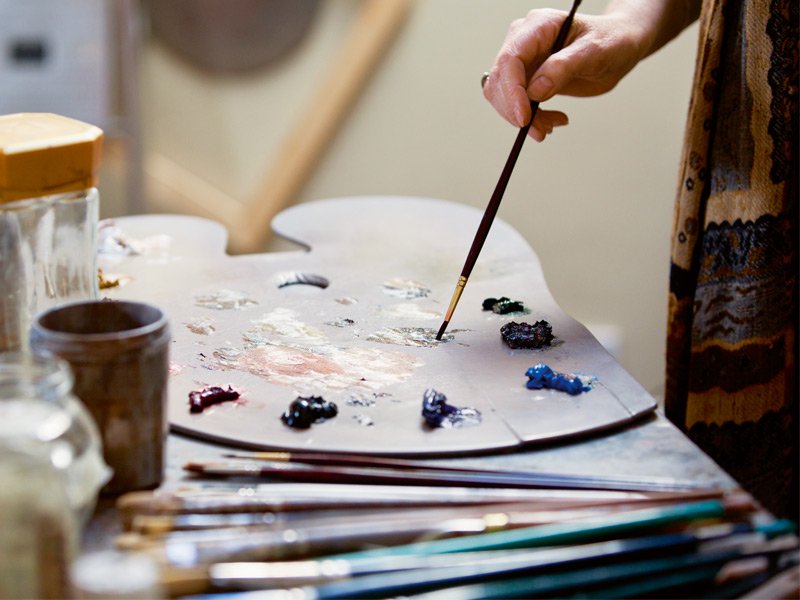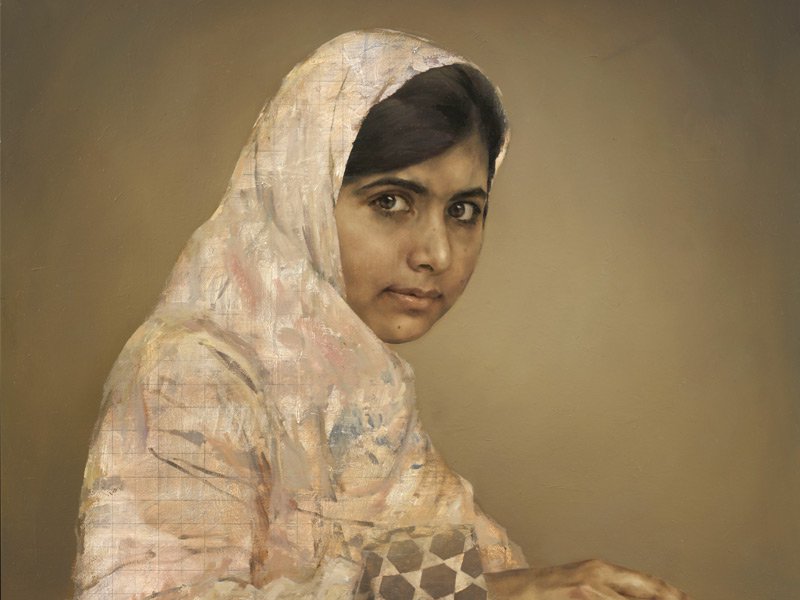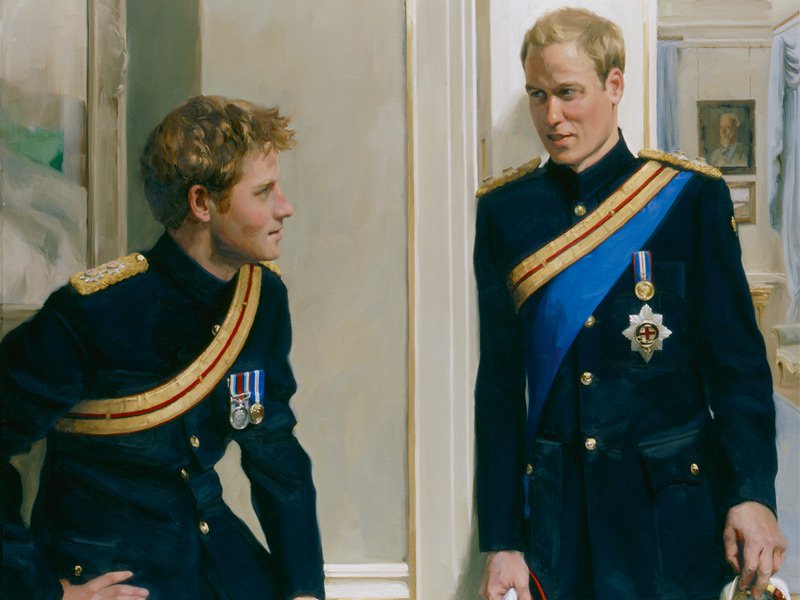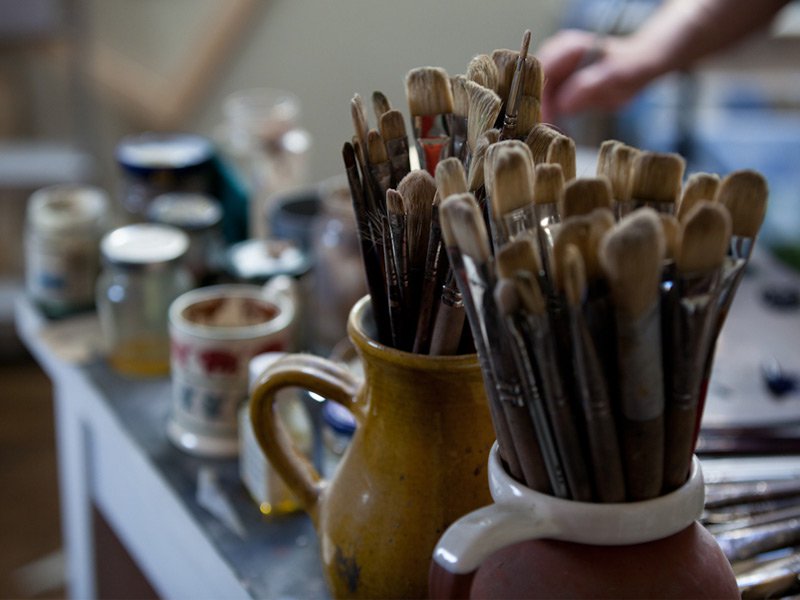How to Commission Your Own Portrait
The instant gratification of the selfie is indisputable, but it can’t compare to the timeless appeal of a portrait painted with skill and care
The instant gratification of the selfie is indisputable, but it can’t compare to the timeless appeal of a portrait painted with skill and care
From astonishingly detailed miniatures of Elizabethan courtiers to sumptuous depictions of Edwardian society women, the portraits we see in venerable museums across the world generally depict royalty, gentry, and the great and the good. Today, however, should you want to be immortalized yourself—be it in oils, pastels, or charcoal—you don’t need to be blue-blooded. So how do you go about commissioning a portrait of yourself, or indeed of a loved one or relative? How does the process work and what do you need to bear in mind?
The aim of art is to present not the outward appearance of things, but their inner significance
Aristotle
“The first thing to do is research an artist who best suits your taste from the huge pool of artists out there,” says Nick Bashall, an established portraitist represented by London’s Fine Art Commissions (FAC) who also runs Lavender Hill Studios art school. “One way is to talk to people who’ve commissioned a portrait and find out how they did so. Now, though, it’s more common to do a search for portrait painters on the internet to help identify an artist or style you like. However, once you’ve done so, it’s best to see their work first-hand, as paintings look very different in the flesh.”

A more targeted approach is to contact a reputable gallery or organization that specializes in portraiture, which will arguably do most of the legwork for you—examples include FAC and the Royal Society of Portrait Painters in London, and MastersofPortraitArt.com and PortraitArtist.com in the US. “These point you to an array of artists whom they’ll have whittled down from lots of pros,” says Bashall, who has painted the Duke of Westminster’s family and Bill Powers, former president of the University of Texas.
And these organizations cast their nets wide. “Fine Art Commissions hand-picks consistently good portraitists from public exhibitions, degree shows, and hundreds of applications received annually,” says Sara Stewart, the gallery’s founder. “We also advise on framing, hanging, and lighting. Prices quoted are based on the artist’s reputation, not on the number of sittings.”
THE PRICE OF POSTERITY
“Our artists are chosen on the strength of their work and are well-respected by their peers,” says Annabel Elton, commissions consultant for the Royal Society of Portrait Painters, which holds annual exhibitions of emerging portrait painters at London’s Mall Galleries, a stone’s throw from Buckingham Palace. “We help potential commissioners select an artist and guide them throughout the process.”
In the US, MastersofPortraitArt.com champions portraiture and represents prestigious artists Daniel E Greene and Everett Raymond Kinstler, among others. Kinstler has painted Bill Clinton; Greene, the heads of such universities as Harvard and Princeton. Kinstler’s paintings start from $25,000 for a head-and-shoulders portrait, while Greene’s work ranges from $25,000 to $135,000 depending on the size of the canvas and how much of the figure is seen.
They offer a valuable alternative to ephemeral digital imagery. They have a layered texture made over days, even years, which conveys nuance
Jonathan Yeo
Alternatively, advises Bashall, you might spot an artist whose style you like at a specialist show such as the annual BP Portrait Award exhibition at London’s National Portrait Gallery (NPG), which showcases some 55 works. This gallery alone, whose collection includes the “Chandos portrait” of Shakespeare, is a reminder that any portrait you commission will be in good company in the art historical sense. Portraiture’s lineage stretches back to the iconic, Egyptian “funeral portraits” of the second and fourth centuries AD, and, earlier still, to Ancient Greece, whose writers lauded its portraitists for achieving a high degree of likeness.
Yet by then, chiming with Aristotle’s statement that, “The aim of art is to present not the outward appearance of things, but their inner significance,” portraiture also aspired to plumb psychological truths. Even so, during the Renaissance, artists such as Hans Holbein the Younger created realistic portraits, inspired by the advent of lusciously thick oils, which superseded tempera, and allowed for a greater variety of texture. According to Rosie Broadley, associate curator at the NPG, “It was in Henry VIII’s reign that people began hanging portraits in their homes.”
NOTE TO SELFIE
By the 19th century, artists—from the Impressionists to the US realist painter Thomas Eakins—began depicting ordinary folk, a reflection of the period’s more democratic spirit. Not that this deterred another artist from the era, US-born John Singer Sargent, from producing his full-length “swagger portraits” of society hostesses in their rustling finery.
Since the late 20th century, our world has become saturated with throwaway, digital imagery, which is all too easy to manipulate. Yet today, partly in reaction to this, people are increasingly attracted to the authenticity of painted portraits, argues portraitist Jonathan Yeo, whose subjects have included Damien Hirst, Tony Blair, and Malala Yousafzai: “They offer a valuable alternative to ephemeral digital imagery. They have a layered texture made over days, even years, which conveys nuance and the complexity of someone’s personality.”

Should this idea inspire you, what happens once you’ve chosen your artist? “There’s an initial meeting in which details such as pose, dress, background, size, and composition are discussed,” says Elton. “If this goes well, there’s more discussion about timing and number of sittings. Only when the first sitting is booked is the client committed. At this point, it’s vital to have a clear understanding of the brief on both sides and of the fees.”
When it comes to the sittings, artists work in different ways. “I prefer to paint my sitters entirely from life,” says Greene, “but many are not available for multiple sittings and prefer the painting to be done after a photography session, followed by a final sitting in my studio or their location.” Artist Nicky Philipps, who is represented by FAC, prefers her clients to go to her London studio—one notable exception being her most famous sitter, HM The Queen, whom she painted at Buckingham Palace. “My studio is north-facing, which is vital as it means you never get direct sunlight hitting your sitter’s face. It’s essential to have several sittings. I do two-hour sessions—after that I run out of steam.

“Lots of people want to dress up, but are formal clothes true to their everyday lives? My credo is, ‘Wear what sums up how you live,’ ” says Philipps. “Some people find a studio environment intimidating. I chat to them, put them at ease. Once they’re less self-conscious, you get to the real person.” Bashall, too, talks to his clients as they’re being painted. “I don’t want them to look rigid, but animated,” he reasons.
Also represented by FAC, New York-based Thomas Leveritt, whose cinematic-looking portraits (costing around $3,000 for a charcoal drawing and $15,000 for an oil portrait) are inspired by the writer Thomas Pynchon, takes things further: “What you’re composing is a psychological profile, so I like to get to know my subject very well. My clients and I have dinner, go for a run, get into political arguments…”
Do artists normally let sitters see their portrait as it progresses? “I’m happy to unless I haven’t painted their eyes in!” says Philipps. By contrast, Bashall has “a massive mirror” behind him: “That way, my clients can see what I’m doing. I want them to be involved in the process.”

Should the client not like the finished portrait, artists will take their criticisms on board, with some provisos. “I don’t take it as a denigration of my abilities if they suggest changes,” says Bashall, who charges from around £5,000 ($8,200) for an oil portrait of a child and £9,000 ($14,760) for one of an adult. “But if I really don’t agree, I’ll say so.”
Ultimately, it’s in the interests of both artist and client to be pleased with the completed portrait, which, ideally, is there for posterity. “The portrait artist is dealing in a form of immortality,” says Greene. “The portrait will last for centuries, embodying the appearance of the subject and artistry of the painter.”